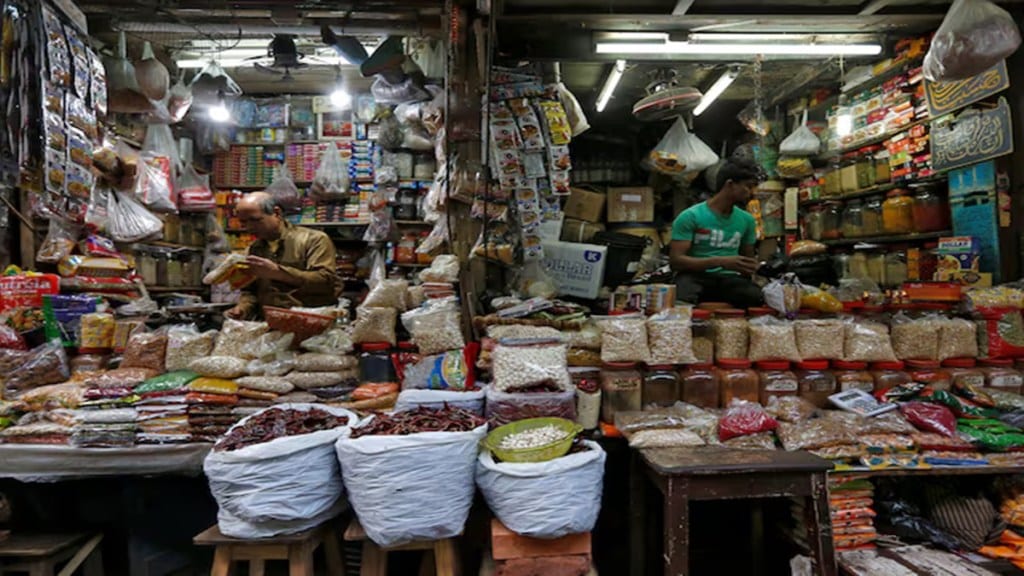By Renu Kohli
Food inflation has now sustained for several years, attracting a range of stringent measures combined with numerous supply shocks. These developments raise several policy challenges, including monetary policy. In recent months, an increasing divergence in core and headline inflation has held back monetary easing due to strong price growth in vegetables, even as that in cereals varies 7-8% upon double digits one year ago. The current expectation is that good monsoons and crop-sowing should moderate food prices ahead with a pathway for the Reserve Bank of India to lower interest rates.
How sure can we be about such a scenario?
Looking back at the five-year period from 2019 to now, there are noticeable departures in food price behaviour that could be indicative of structural breaks or trend shifts in both the level and price growth or inflation. Consider some key changes in April 2019-October 2024 relative to the preceding six-years, April 2013-March 2019).
- It is well-known that wholesale and retail food inflation averages much higher in the latter period at a respective 5.6% and 6.7% a year each month against 4% previously.
- There’s a pronounced shift in price level too, with the wholesale and retail food indices moving up an average ~36 and 40 points over the pre-2019 level — a 28% and 31% rise.
- An important difference is the lasting push of food inflation since April 2019 compared to more short-lived surges before. For example, the longest pre-2019 surge in April 2012-August 2014 lasted about two years, relieving the pressure upon headline inflation thereafter. The current one persists for more than five years to date.
- Food supply shocks have successively shorter intervals. If the distance between peaks ranged ~16-17 months before 2019, this has varied four-12 months in the latter period with increased frequencies.
- Bigger, more frequent swings in food prices with shorter durations also mean more volatility, which is observable across the board at all horizons (two years, one year, six and three months). The trough-to-peak swings are comparably bigger and because of the upward shift in the mean, the downswing reversions are comparably smaller after 2019.
- Vegetable price spikes also differ from past patterns. Retail vegetable price growth has averaged 10% a month in April 2019-October 2024, almost double the preceding period average, 5.3%. Producer vegetables prices have paced faster at a 13.4% monthly average against the corresponding 5.7% previously.
- Like total food inflation, not only has stronger producer and retail inflation in vegetables persisted for five years, but there is also a similar trend shift — the respective indices average 71 and 41 points higher, reflecting a 47% and 29% rise over the pre-2019 average. The price level jump is steeper in the last two years.
- While retail-wholesale vegetable inflation volatility is higher in annual and sequential terms, the seasonal price spikes appear to have moved from the usual August-November months to November-December in the last five years. Price flare-ups are more frequent in other months, such as June-July as well. It is difficult to say if these are permanent.
These trends may or may not signify structural breaks or trend shifts, observed as they are over a five-year horizon. However, the deviations are recurrent and significant. Therefore, they do shake confidence about moderations in line with past behaviour and induce caution about the near-term path of food inflation and at longer intervals.
More importantly, the fundamental causes of these differences in price behaviours are not properly known and incompletely understood. It is commonly believed that continuous weather shocks related to climate change have been prime causes. For example, heatwaves in 2022-23 impacted wheat yields, prices, and procurement, depleting the stocks. But why should rice prices have been rising with matching strength, if not more? The same did not happen to rice and its procurement while stocks are in excess. Then, why do cereal price pressures persist despite the stock replenishments? How do the price developments relate to production, procurement, and stocks?
Conversely, why does the price growth persist despite numerous and stricter supply-side measures? Since 2021, these have extended from regular market intervention such as wheat sales, rice and wheat export bans, raised import duties and minimum export prices, stockholding limits with continuous lowering of caps on wheat-rice stocks held by traders, wholesalers, retailers including big chains, and processors. The intensity and duration of such restrictions is unprecedented. Why have the unmatched open market sales of wheat — a three-fold annual increase from FY21, followed by a trebling in FY23 from 3.5 to 9.4 million tonnes in FY24 — not succeeded in countering the price rise? Why are rice stocks overflowing despite substitution for wheat in public distribution? What is the effective role of these supply measures in the persistence of pressures and volatility in food price changes?
There are many puzzling questions. The more fundamental implications of the shift in price level and elevated rate of changes are grave. For one, even if food inflation climbs down to the desired rate, 4%, the raised price level matters to households and for aggregate demand. Two, the relative price changes (food versus non-food items) point to a much longer horizon for corrections. This, in turn, would require policy restrictions to remain longer in place than in the past. But then, little is known about causes and effects, the interlinkages and mutual feedback that remain unexplained. We are less sure about food inflation than ever before.
The writer senior fellow, Centre for Social & Economic Progress (CSEP), New Delhi.
Disclaimer: Views expressed are personal and do not reflect the official position or policy of FinancialExpress.com. Reproducing this content without permission is prohibited.

